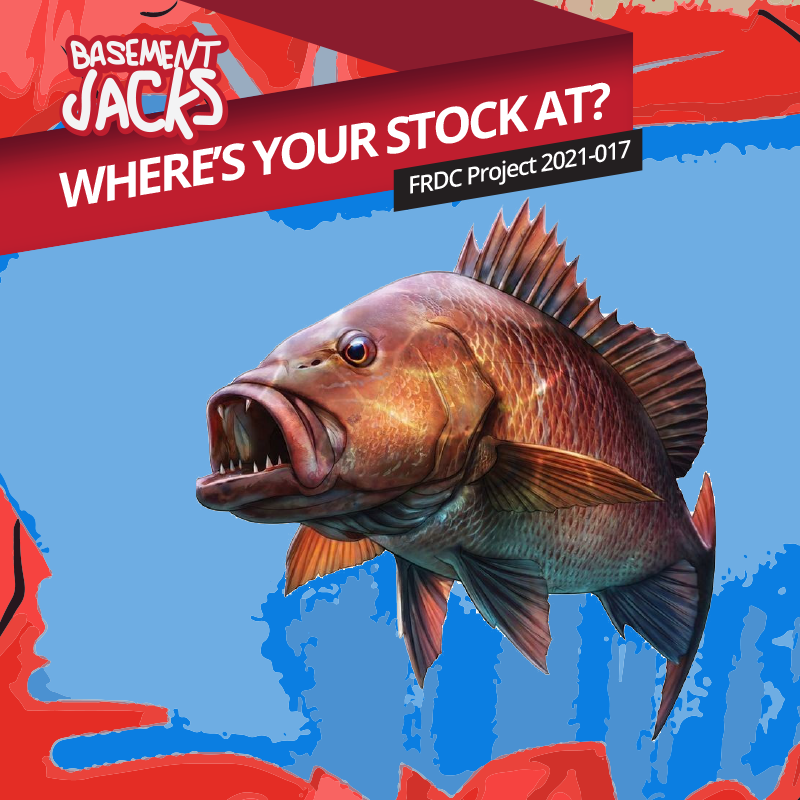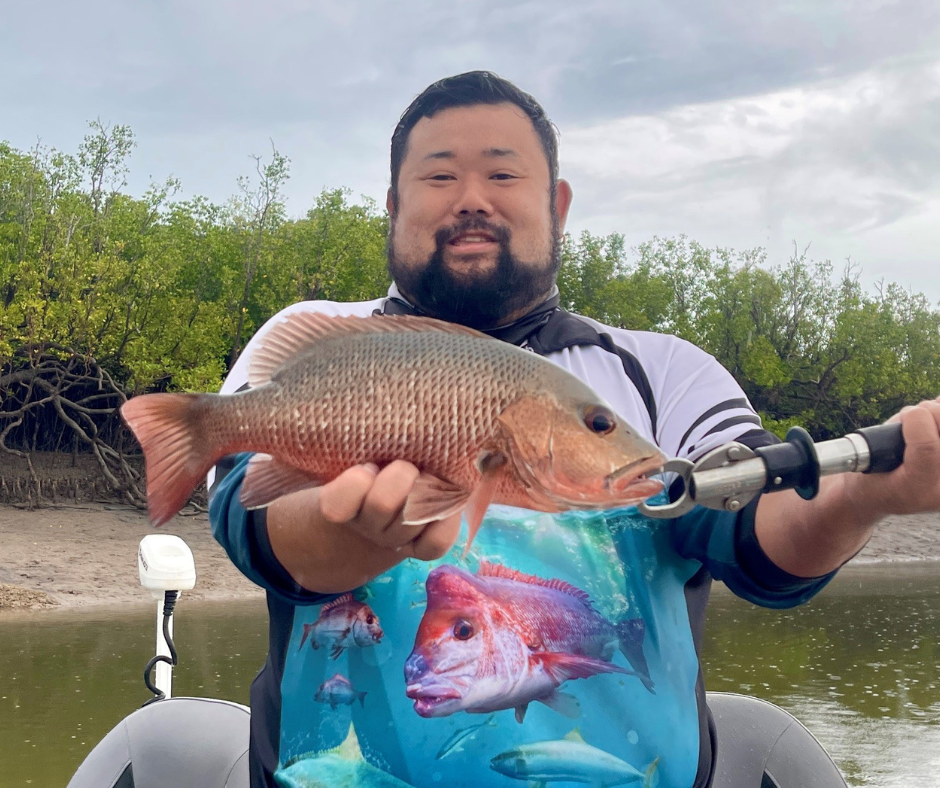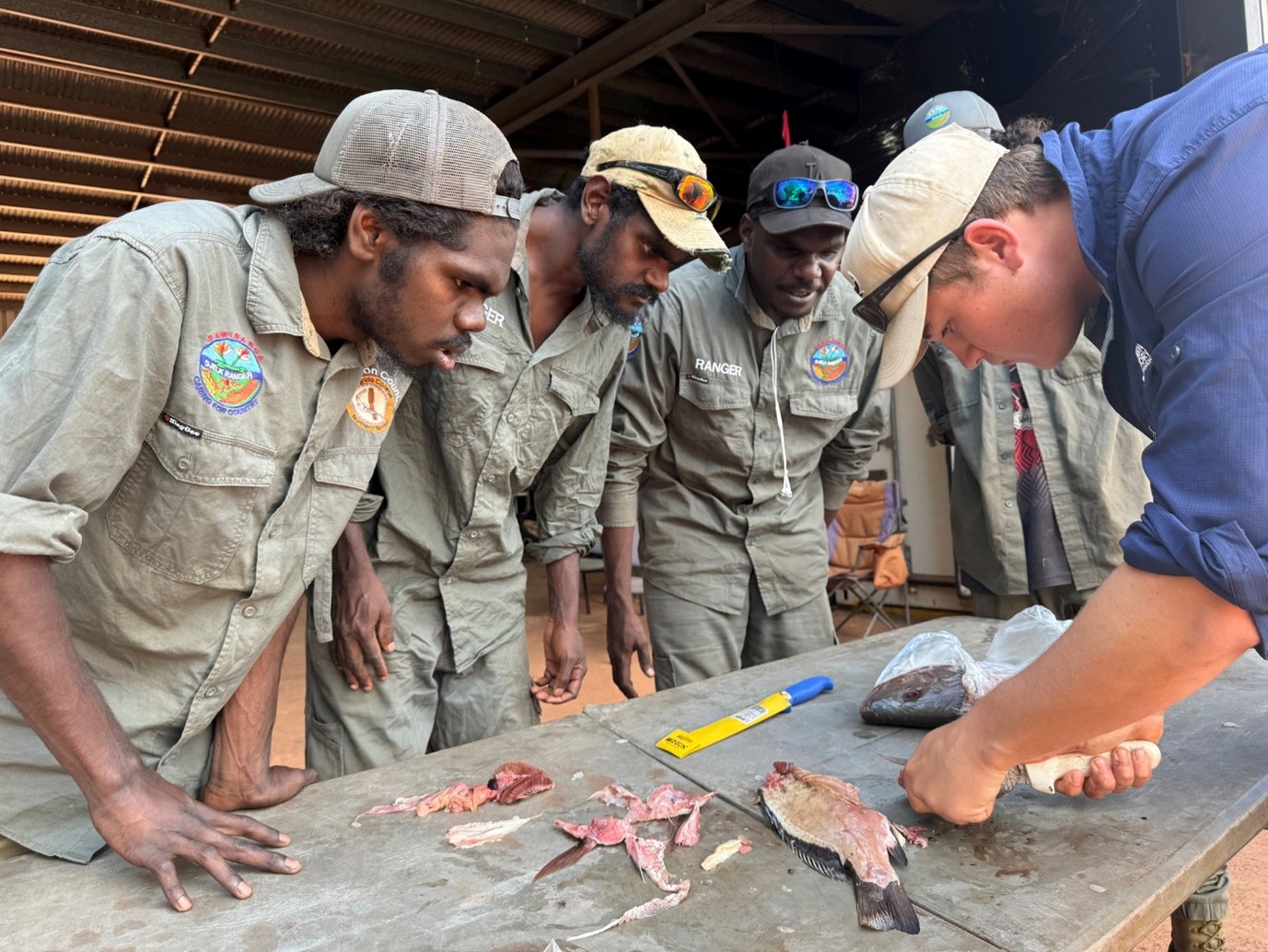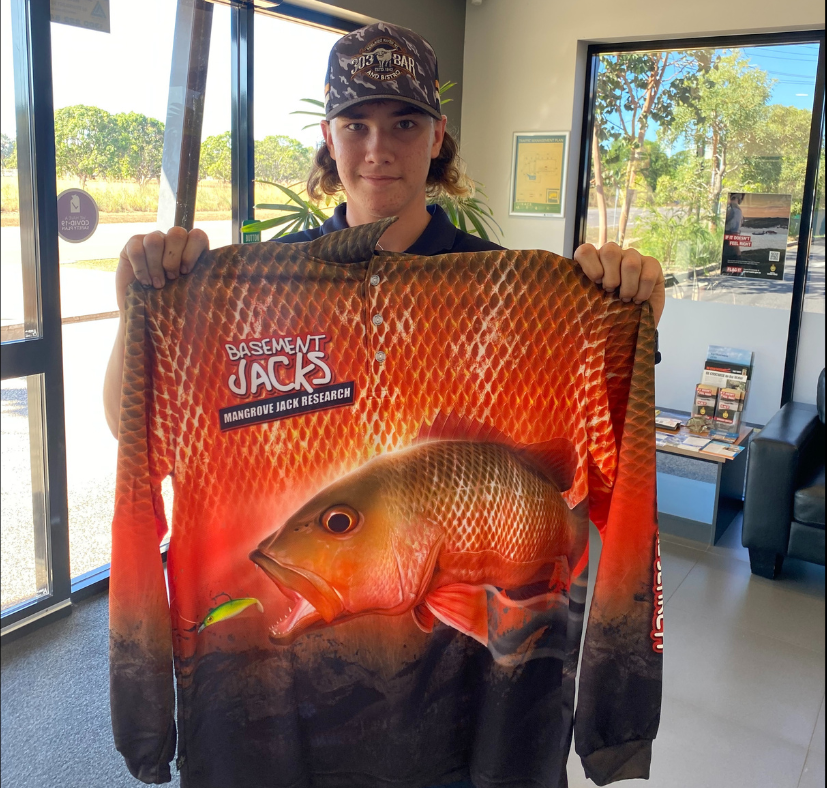Genetics, micro-chemistry and even parasites are being used to learn more about Mangrove Jack (Lutjanus argentimaculatus), including stock structure and migration patterns.
By Catherine Norwood
Mangrove Jack has developed a cult-like following, becoming a staple in the playbooks of both avid fishers and food enthusiasts. Known for its fierce fighting spirit and celebrated as one of Australia’s top eating fish, it holds a prized spot in the nation's fishing and dining culture. To ensure its continued sustainability, FRDC is teaming up with various organisations to tackle a crucial question: ‘Mangrove Jack – where’s your stock at?’
The title of the research project might strike a familiar chord for some, echoing the enduring legacy of a popular 2000’s dance tune. It is hoped this catchy name will spark the interest of recreational, indigenous and commercial fishers, who are being asked to contribute to this project, and ensure Mangrove Jacks are cherished for generations to come.

The Australian distribution of the species extends from Perth in Western Australia northwards across the Northern Territory to Cape York then down the east coast of Queensland to northern New South Wales. This makes collaboration across fisheries jurisdictions essential, says project leader Grant Johnson from the Australian Institute of Marine Science (AIMS).
Refining population data
While previous research has identified Mangrove Jack as a single genetic population connected across the whole of its range, the techniques used in the previous assessment were “relatively broad brush and limited by the techniques available at the time”, says Grant. As stock discrimination techniques have improved, population structuring is now being detected in other lutjanid species where it was previously unnoticed.
“It could be we are missing important population boundaries that will require an additional level of management, particularly in areas where they are heavily targeted,” explains Grant.
Resolving uncertainty in stock structure for important species such as Mangrove Jack is a priority for FRDC, investing millions of dollars over 25 years.
Grant says using a combination of cutting-edge genetic methods, otolith (fish earbone) micro-chemistry, and parasite analyses will provide a finer scale detail.
“Each of these techniques tells you something subtly different about the scale of movement and the timeframe in which it occurred. Genetics indicate movement over longer timeframes. Otolith micro-chemistry and parasites provide insights into movement within the lifespan of the fish being analysed.”
Community participation
Key to the success of the research is fishers playing the role of citizen scientists helping to collect Mangrove Jack frames for analysis.

“The commercial sector has provided samples from offshore locations, while tackle shop owners in Western Australia and the Northern Territory have helped reach recreational fishers by acting as collection points where keen anglers can drop off frames. Queensland has taken a more targeted approach by speaking directly with keen recreational and charter fishers in targeted areas who have provided terrific support for the project,” says Grant.
“Aboriginal Rangers and school students have also played a crucial role, collecting valuable samples from remote areas along the northern Australian coast.”

The project has launched a social media campaign to raise awareness, encourage donations, and keep stakeholders updated on progress. This effort is further supported by radio and print media promotions, as well as participation in fishing trade shows and conferences. Additionally, the project offers a variety of exclusive ‘Basement Jacks’ merchandise, including lures and shirts, to encourage engagement and support.
There is still time to donate samples and receive your exclusive “Basement Jacks” lure, with the chance to win a Basement Jacks fishing shirt! In Western Australia, Mangrove Jack frames can be dropped off at Tackle World Broome, Karratha Adventure Sports, Exmouth Tackle and Camping, and Telomac Tackle and Camping in Carnarvon. In Darwin, Fishing and Outdoor World, Craig’s Fishing Warehouse, and We Sell Fun will all gladly accept your frames. Queensland is still seeking frames, particularly from the Hervey Bay to Mackay area. If you have frames to donate, please contact the Queensland Keen Recreational Angler Program at FisheriesMonitoring@daf.qld.gov.au.

In the 12 months since the project was launched, it has collected 730 samples: 203 for WA, 349 from NT and 178 from Queensland.
Grant says sampling will be complete early in 2025, and the processing of frames is already underway. The project progress will be regularly updated on each jurisdiction’s social media throughout the year.
Findings from the project will also be used to update the Status of Australian Fish Stocks (SAFS) Reports and to inform fisheries management across state and territory jurisdictions to ensure stocks remain sustainable.
Project partners include the Northern Territory Department of Agriculture and Fisheries, Western Australia’s Department of Primary Industries and Regional Development, Queensland’s Department of Primary Industries, the Amateur Fishermen’s Association of the Northern Territory, Recfishwest, Australian Institute of Marine Science and the McArthur River Mine.
Related FRDC Project
2021-017: Basement Jacks - Where's your stock at? Understanding stock structure and connectivity of Mangrove Jack in northern Australia





